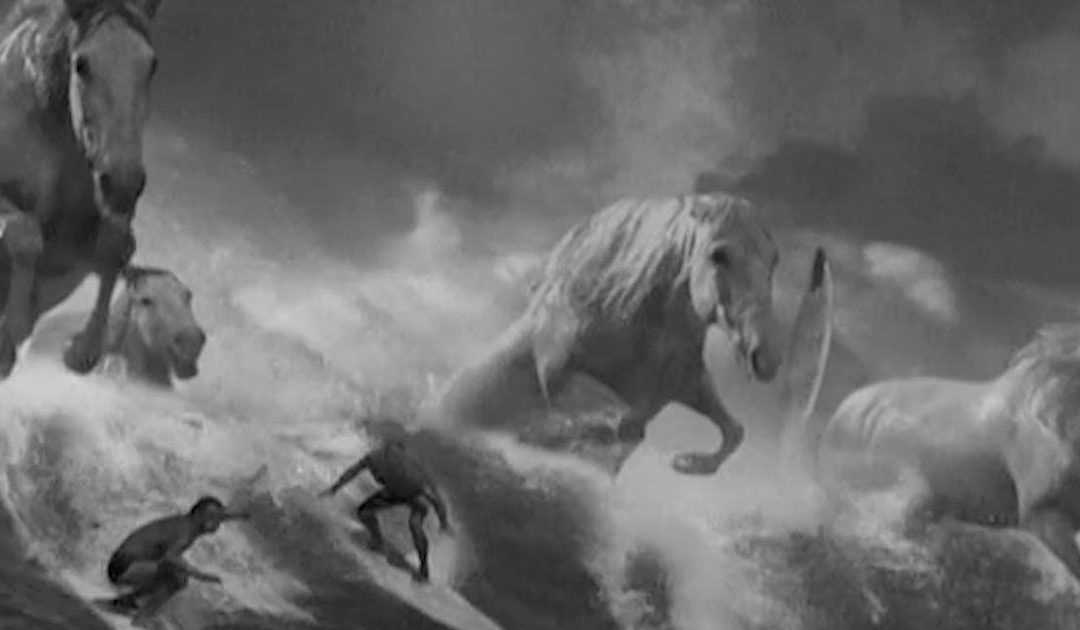In the pantheon of advertising greatness, few commercials have achieved the lasting impact and universal acclaim of the Guinness Surfer ad. First aired in 1999, this iconic piece of film was more than just a beverage commercial—it was a cultural moment. Directed by Jonathan Glazer and backed by Leftfield’s thunderous track Phat Planet, the ad became a benchmark in storytelling, cinematography, and emotional resonance.
But what made this Guinness commercial stand out so dramatically? And why, decades later, is it still considered by many as the greatest commercial of all time?
The Plot: A Metaphor for Patience and Reward
The Guinness Surfer ad revolves around a group of Polynesian surfers waiting for the perfect wave. As the swell builds, we see one man, in particular, locked in intense focus. He finally launches himself into a massive wall of water, only to face monstrous, thunderous white horses crashing through the wave.
The scene is raw and intense—surreal, even. It uses the metaphor of taming the powerful wave and overcoming odds as a reflection of Guinness’ famous tagline: “Good things come to those who wait.”
That line is not just about beer. It’s about perseverance, about life, and the art of timing.
Cinematic Brilliance: Why the Visuals Still Stun
At its core, the Guinness Surfer ad is a visual poem. The black and white cinematography adds to its timeless aura, stripping away distractions and focusing on stark contrasts—between power and poise, chaos and control.
Jonathan Glazer, who would go on to direct acclaimed films like Under the Skin, approached the ad with the precision of an auteur. He worked with real surfers, used elaborate animatronics for the “white horses,” and filmed in Hawaii under extreme conditions. The result is nothing short of a masterpiece that feels more like a scene from a gritty epic film than a 60-second commercial.
Sound Design and Music: The Pulse of the Ad
One cannot speak about the Guinness Surfer ad without praising the soundtrack. Leftfield’s Phat Planet—a track driven by a relentless, pulsating bass—infuses the ad with a sense of urgency and tension.
Combined with the roars of the sea, galloping hooves, and pounding drums, the music adds a visceral texture that elevates the narrative. The sound isn’t just a background layer; it’s a character in itself, echoing the emotional stakes of the surfer and his confrontation with nature.
Symbolism and Deeper Meaning
Every frame of the Guinness Surfer ad is dripping with symbolism. The “white horses” crashing through the wave reference the idiom “white horses on the sea,” representing wind-blown wave crests. In the ad, they symbolize both the power of nature and the internal battle the surfer faces.
Then there’s the concept of patience. The entire ad builds on the idea that the best rewards require time. This beautifully aligns with Guinness’ product message—poured slowly, to perfection—and broader human truths about discipline and perseverance.
Even the decision to shoot in black and white suggests timelessness, stripping the ad of fleeting color trends to root it in a more enduring aesthetic.
Cultural Impact and Critical Reception
Upon release, Guinness Surfer became an instant classic. It won numerous awards, including two D&AD Yellow Pencils and the top prize at Cannes Lions. In a 2002 poll conducted by Channel 4 and The Sunday Times, it was voted the greatest TV commercial of all time in the UK.
Beyond accolades, the ad permeated pop culture. It was studied in film and marketing classes, parodied in other commercials, and frequently cited as a gold standard for brand storytelling. Guinness, already a well-known brand, became something more—a symbol of artistic advertising.
Why It Still Resonates Today
Over 25 years later, the Guinness Surfer ad still feels fresh. In an age of fast content and short attention spans, its slow, deliberate pacing is a reminder of the value of storytelling. Modern viewers might be surprised by how little Guinness is actually shown in the ad, which only makes the message more powerful.
It proves that great branding doesn’t always need a hard sell. Sometimes, it’s about emotion—creating a moment that people remember, talk about, and share.
Moreover, its themes are universal. In a post-pandemic world, where patience, resilience, and introspection have become more vital than ever, the surfer’s journey feels especially relevant.
Conclusion
The Guinness Surfer ad isn’t just a beer commercial—it’s art. It broke the mold of what advertising could be and set a precedent that few have matched since. With its masterful direction, evocative music, powerful metaphor, and bold aesthetic, it captured both the spirit of the brand and the imagination of viewers worldwide.
Whether you’re in marketing, filmmaking, or simply someone who appreciates brilliance in motion, the Guinness Surfer commercial is a landmark worth revisiting. For many, it is not just the best commercial of its time—but the best commercial of all time.
FAQs
1. Who directed the Guinness Surfer ad?
The ad was directed by Jonathan Glazer, an acclaimed British filmmaker known for his distinctive and cinematic style.
2. What is the music used in the Guinness Surfer commercial?
The track is “Phat Planet” by Leftfield, an electronic duo whose aggressive beat perfectly matches the ad’s energy and tension.
3. Where was the ad filmed?
The commercial was filmed in Hawaii, using real surfers and extensive special effects to achieve the dramatic wave scenes.
4. Why is it in black and white?
The black and white cinematography adds timelessness and emphasizes contrast, creating a more artistic and focused visual experience.
5. What is the message behind the ad?
The main message is “Good things come to those who wait”, reflecting Guinness’ branding but also tapping into broader themes of patience, reward, and inner strength.
Also read: Ping Pong South Bank: 10 Ultimate Guidelines to an Exciting Night Out.

